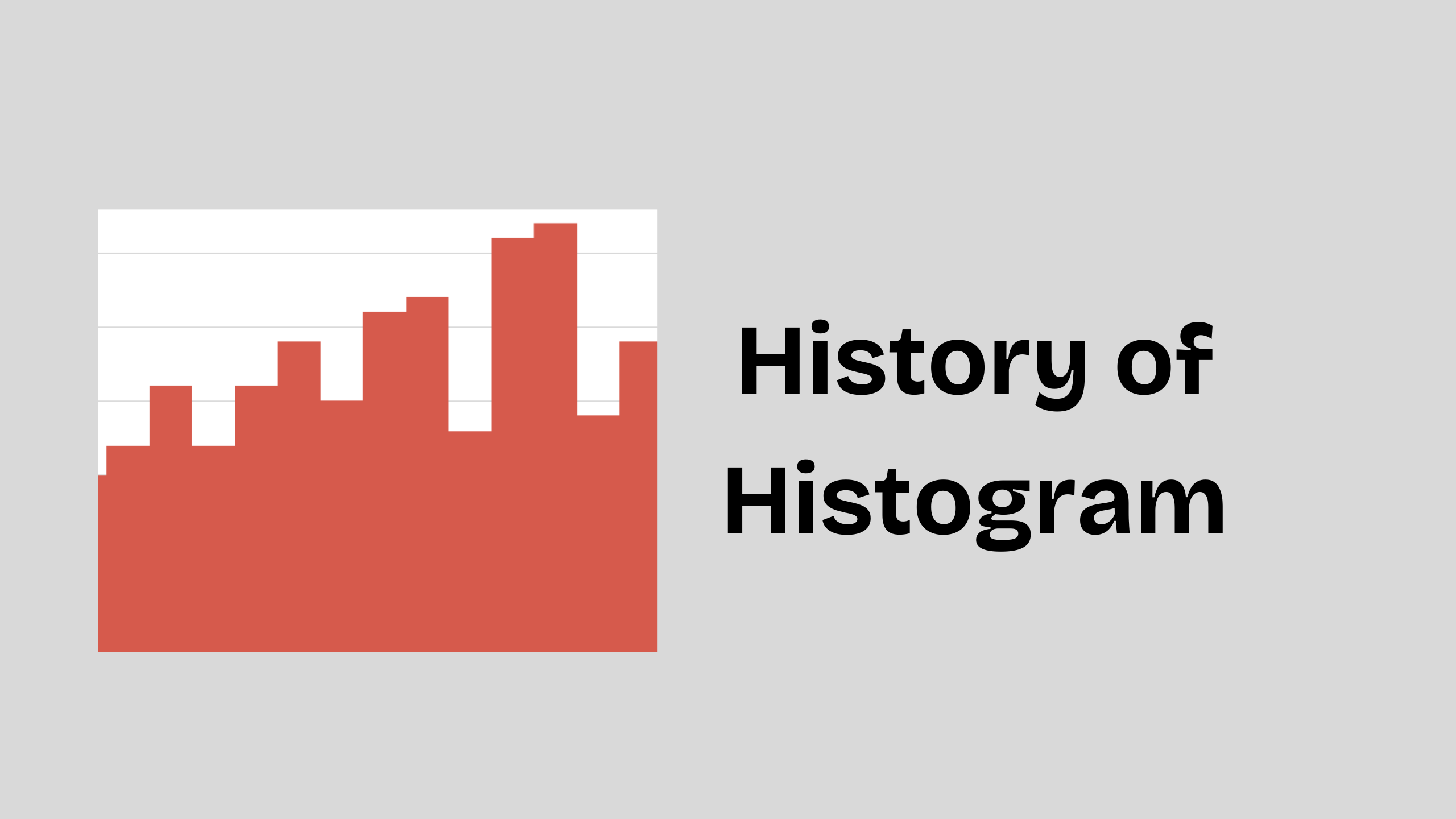The History of the Histogram: From Statistics to Modern Data Analysis

In the world of data visualization, few tools are as widely recognized and utilized as the histogram. This simple yet powerful graphical representation of data distribution has become a staple in statistics, data science, and everyday data analysis. But where did the histogram originate, and how has it evolved over time? Let’s explore the fascinating history of the histogram and its journey from early statistical methods to modern-day applications.
The Origins of the Histogram
The concept of the histogram can be traced back to the 19th century and the pioneering work of Karl Pearson. In 1895, Pearson, a British mathematician and biostatistician, introduced the term "histogram" in a publication on the mathematical theory of evolution. He developed the histogram as a way to visualize frequency distributions and better understand the underlying patterns in datasets.
Pearson's work laid the foundation for modern statistics, and his introduction of the histogram was a breakthrough in how data was interpreted. The histogram provided a method to visually assess the shape, center, and spread of a dataset, which proved invaluable in fields ranging from biology to economics.
What is a Histogram?
A histogram is a graphical representation that organizes a dataset into a series of intervals, or "bins," and displays the frequency of data points within each bin. Unlike a bar chart, which represents categorical data, a histogram is used for continuous or numerical data. Each bar in a histogram reflects the number of data points that fall within a specific range.
Histograms allow analysts to quickly identify patterns such as skewness, symmetry, and the presence of outliers. This makes them particularly useful in descriptive statistics, where summarizing large datasets visually provides immediate insights.
The Evolution of the Histogram
Over the past century, the histogram has evolved alongside advances in statistical theory and technology. Early histograms were created manually using graph paper, which required meticulous calculations and precise drawing. With the advent of computers in the mid-20th century, statisticians could generate histograms more efficiently and with greater accuracy.
Today, histograms are an integral part of statistical software and data visualization tools. From basic spreadsheets to advanced programming languages like Python and R, modern tools allow users to create dynamic and interactive histograms with ease. These advancements have expanded the histogram's applications, making it accessible to a wider audience across various disciplines.
Applications of the Histogram in Modern Data Analysis
Histograms continue to play a crucial role in modern data analysis. Some key applications include:
- Data Exploration: Histograms provide a quick overview of data distribution, helping analysts identify patterns, trends, and anomalies.
- Quality Control: In manufacturing, histograms help monitor product consistency and detect defects by analyzing measurements.
- Statistical Inference: Researchers use histograms to assess normality assumptions, which are essential for many statistical tests.
- Machine Learning: Histograms assist in feature engineering and understanding data distributions, improving model performance.
- Public Health: Epidemiologists use histograms to visualize the distribution of health outcomes, such as the spread of diseases.
The Future of the Histogram
As data continues to grow in volume and complexity, the histogram remains a fundamental tool for understanding and interpreting information. Innovations in interactive visualization, real-time analytics, and big data will likely shape the future of histograms. Tools like histograms will continue to evolve, providing deeper insights and empowering data-driven decision-making.
Whether you're a student learning statistics or a data scientist analyzing large datasets, the humble histogram remains an indispensable ally. Its ability to distill complex information into an intuitive visual form is a testament to its enduring value across centuries of scientific progress. In the ever-expanding world of data, the histogram stands as a timeless bridge between raw numbers and meaningful insights.